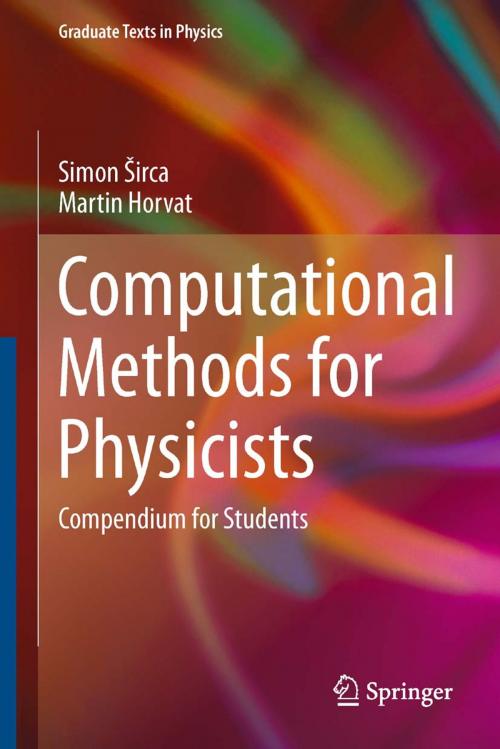Computational Methods for Physicists
Compendium for Students
Nonfiction, Science & Nature, Mathematics, Counting & Numeration, Science, Physics, Mathematical Physics| Author: | Simon Sirca, Martin Horvat | ISBN: | 9783642324789 |
| Publisher: | Springer Berlin Heidelberg | Publication: | December 17, 2012 |
| Imprint: | Springer | Language: | English |
| Author: | Simon Sirca, Martin Horvat |
| ISBN: | 9783642324789 |
| Publisher: | Springer Berlin Heidelberg |
| Publication: | December 17, 2012 |
| Imprint: | Springer |
| Language: | English |
This book helps advanced undergraduate, graduate and postdoctoral students in their daily work by offering them a compendium of numerical methods. The choice of methods pays significant attention to error estimates, stability and convergence issues as well as to the ways to optimize program execution speeds.
Many examples are given throughout the chapters, and each chapter is followed by at least a handful of more comprehensive problems which may be dealt with, for example, on a weekly basis in a one- or two-semester course. In these end-of-chapter problems the physics background is pronounced, and the main text preceding them is intended as an introduction or as a later reference. Less stress is given to the explanation of individual algorithms. It is tried to induce in the reader an own independent thinking and a certain amount of scepticism and scrutiny instead of blindly following readily available commercial tools.
This book helps advanced undergraduate, graduate and postdoctoral students in their daily work by offering them a compendium of numerical methods. The choice of methods pays significant attention to error estimates, stability and convergence issues as well as to the ways to optimize program execution speeds.
Many examples are given throughout the chapters, and each chapter is followed by at least a handful of more comprehensive problems which may be dealt with, for example, on a weekly basis in a one- or two-semester course. In these end-of-chapter problems the physics background is pronounced, and the main text preceding them is intended as an introduction or as a later reference. Less stress is given to the explanation of individual algorithms. It is tried to induce in the reader an own independent thinking and a certain amount of scepticism and scrutiny instead of blindly following readily available commercial tools.















